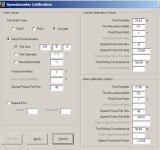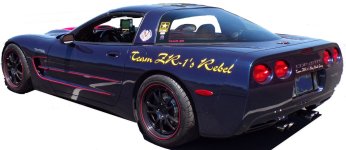You are using an out of date browser. It may not display this or other websites correctly.
You should upgrade or use an alternative browser.
You should upgrade or use an alternative browser.
Classic vs Restomod
- Thread starter GCorvette
- Start date
Chuffer
CCCUK Member
Zero suspension travel maybe .That looks fine to me, I just can't work out how the wheels don't hit the wheelarches!
Oneball
CCCUK Member
So doing this to a chrome bumper c3 is not right this is also running an ls engine and tremec 5 speed now as well
That’d be great if it had 16” or maybe 17” but don’t like the wheels.
You’ve done a superb job with the bonnet fit, who made it?
Custom exotics
Well-known user
We did well modded the long bonnet to work with the vacuum operated wiper door...That’d be great if it had 16” or maybe 17” but don’t like the wheels.
You’ve done a superb job with the bonnet fit, who made it?
And as for the ride really well as the got overall hard at all
teamzr1
Supporting vendor
Zero suspension travel maybe .The ride must be as hard as nails on those rubber bands that pass for tyres !!
Problem is most people are deciding tire size for looks rather than proper functional suspension travel
Most lower the piss out of the car and selecting a tire to look cool
What they have done is less travel of shocks when they were designed for more travel, now making the ride stiff and useless
For my needs my 99 C5 is lowered as far as possible to limit moving air under the car that would induce lift which defeats what I want
I then choose race shocks that were designed to be shorter, so now the travel meets the valving of the shocks
I also installed them upside down so less unsprung weight and has bump stops to prevent bottoming out.
Side rockers are only 3 inches off the ground, which does make it a pan in the ass to get a floor jack under when needed
Do not know how they define tire size in the UK but here in the USA
I selected 18-inch rims, where the fronts are 10 inches wide where the rears are 12 inches wide
For tire size, I selected 275/35/18 and rears 335/30/18
The 35 means the sidewall height is 35% of what the width is and 30% of the width of rears
As image shows, the fronts have very little free space from top of tire to lower edge of fender well
Where rear sits a bit higher
I did this so when hard launching from a dead stop (brake torque) and the setting of shocks (3 way adjustable) the
front of the car will lift on launch which shifts the front/rear weight ratio over the ass end, so it goes lower and
why more space needed when it comes down the shifted rear weight puts more downforce onto the tire patch on the road for better traction
GM of course leaves lots of free space in fender wells for rotten road conditions where lots of travel is needed
End the end owners really need to consider shock design to what tires and shock designs are before lowering and changes tire sidewall profiles
as we know, short sidewall has less side flex so corners well where it is not great for had launches when using lower tire pressure where
taller sidewall causes too much flex in cornering but better for hard launches
Lastly, once GM began using controllers including for auto controlling an auto tranny is the controller has to know exactly what the tire size is
as it uses that to dictate when up/down shifts are done and if changing the tire size then means the tire rotation per mile changes but the controller
is still configured for the GM tire size and if you do not change those settings in the controller to match the new tire size, else the controller will
be shifting at incorrect MPH/RPMs
Here is just part of what I have to correct when a tuning customer has changed tire and/or wheel size in the controller so that the speedo reports correctly and auto tranny functions correctly


CaptainK
Moderator
I like the standard style of the C3 from the exterior, but I do like a few choice mods to the car - namely in my case the wheels as I just don't like the standard wheels at all - for me it just ruined the whole look of the C3, especially when the centre cap kept falling off. Sorry for that sin there, but I don't like them. I also think engine upgrades are good as technology has moved on and its nice to make it more driveable - HEI dizzy, electronic control, fuel injection etc.
I've only changed the wheels (17 inch alloys, as I didn't want "rubber band" style wheels, but wanted something a bit bigger than standard), headers, HEI dizzy, carb and (dual plane) manifold on mine - mostly because the old dizzy and carb didn't work well, and the (single plane) manifold I didn't really like much. Ideally I'd like new heads, stroker kit, and fuel injection on my engine. Other than that, keep it looking standard and fix the niggly issues.
I've only changed the wheels (17 inch alloys, as I didn't want "rubber band" style wheels, but wanted something a bit bigger than standard), headers, HEI dizzy, carb and (dual plane) manifold on mine - mostly because the old dizzy and carb didn't work well, and the (single plane) manifold I didn't really like much. Ideally I'd like new heads, stroker kit, and fuel injection on my engine. Other than that, keep it looking standard and fix the niggly issues.
Nassau65
CCCUK Member
Wheels are such a personal thing, you either love or hate a certain design. I must admit I like the C3 wheels weather it be rally or aluminium type, I prefer the aluminium type myself. It’s an easy upgrade to make and if you keep the old ones, it can be returned to stock just as easily.
